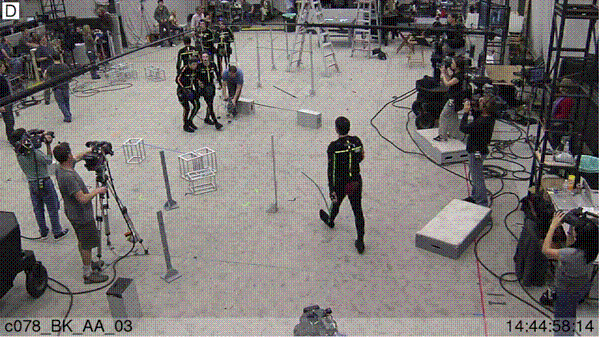
Virtual production, driven in a large part by real-time Digital Entertainment Creation (DEC) software from Autodesk has evolved significantly since the process was used for the landmark release of “Avatar” in 2009. Peter Jackson’s New Zealand-based Weta Digital studio, long known for its technological innovation, used Autodesk software to take the virtual production process to new levels of real-time performance capture for the animated feature film “The Adventures of Tintin.”
Steven Spielberg’s take on the character created by Belgian artist Hergé is an unqualified box office and critical success – with a growing box office gross of over $360 million worldwide – and is one of the 20 highest grossing films of 2011. Reviews have praised the immersive stereoscopic 3D experience together with the unique combination of performance capture and photorealistic filmmaking for an animated movie.
“The ability to digitally capture the subtleties of an actor’s performance and to move digital environment data between pre-production, production and post-production has opened up the moviemaking experience,” said Joe Letteri, Weta Digital Senior VFX Supervisor. “We’re able to build a virtual set that gives directors the ability to construct shots with the actors in the environment, just like they would on a live-action set. The data captured on set is used for lighting, modeling, textures and the rest of the post-production process. While the underlying technology is similar to what we used on ‘Avatar,’ we had a better understanding of the tools we needed and were able to realize workflow improvements that enabled us to streamline the movement of capture data from the set to final production.”
The virtual moviemaking process for “Tintin” included Weta Digital artists previsualizing and building the digital environment of the film in low resolution using Autodesk Maya 3D animation and visual effects software and loading that data into the virtual environment. The live performance of the actors on set was captured using Autodesk MotionBuilder real-time 3D character animation software, providing a consistent platform that enabled production teams to more rapidly create, iterate and refine the look of the movie throughout the production. Applying virtual production techniques to a fully computer-generated (CG) film meant Weta Digital was able to create an on-set environment that connected to the visual effects process and allowed Steven Spielberg to work the way he would on a live-action set. He was able to craft his shots and get the take he was looking for, all within the context of the world of “Tintin.” The actors were not only able to interact with each other live on-set, they could interact with props and fully inhabit the world in body and in voice.
“Autodesk’s latest technology is enabling filmmakers to enter an incredible new world of moviemaking,” said Marc Petit, senior vice president, Autodesk Media & Entertainment. “It is helping make the techniques accessible to a broader range of filmmakers, and enabling them to better express and exhibit their artistic intent. What Weta’s artists and innovators have been able to accomplish by animating and imbuing these beloved fictional animated characters with human performance is truly spectacular.”
“The Adventures of Tintin” is certainly the new high-water mark for virtual productions and recently won the Golden Globe for Best Animated Feature Film. “Weta Digital strives to bring innovative technology to further what is visually possible,” said Sebastian Sylwan, chief technology officer, Weta Digital. “Our technology requirements tend to be complex and we work with research institutions, industry partners and technology leaders like Autodesk to create the most sophisticated tools we can for our artists. For ‘The Adventures of Tintin,’ we benefited from customized technology support from Autodesk to help us get the virtual production process running as efficiently as possible.”
To find out more about how Weta Digital used Autodesk software in the making of “Tintin,” visit:http://area.autodesk.com/tintin
